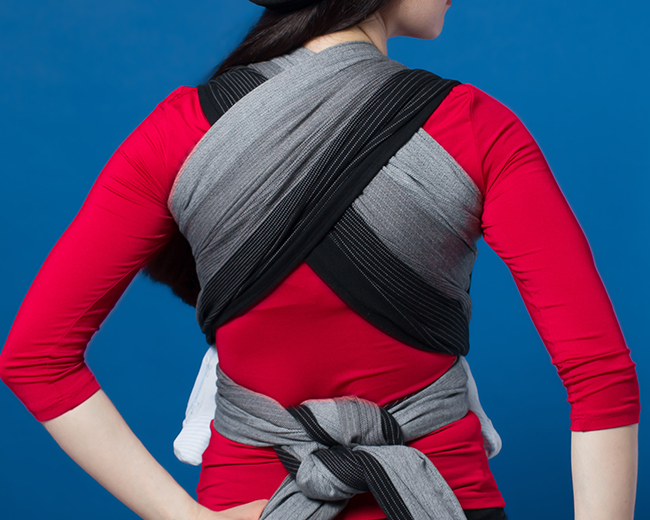Does babywearing help your baby's development?
Babywearing frees up your hands, but did you know there are a number of other benefits?
If you have tried babywearing, you’ll know that it can be helpful when you need to get things done at home, or run errands outside the home. But research suggests that there are other benefits to wearing your baby.
Is it safe?
If you choose to use a sling or carrier, it’s important to keep a few things in mind. Make sure that your carrier is secured tightly enough to keep your baby close to your body without obstructing their nose or mouth. You should be able to see your baby’s face at all times.
Make sure that your baby’s back is supported anytime they are in a sling or carrier. Your little one’s back should never be curled into a c-shape or slumped.
If you prefer back carrying, it’s best to start when your baby demonstrates good head control, which is usually at around four months. Always make sure that your baby is secure, and that their chin is not resting on their chest. Their airways must be open, and their back properly supported.
When to try it
Many parents and caregivers try babywearing simply to reduce crying in the early days and weeks of an infant’s life. And studies suggest that babies who are carried do, in fact, fuss less. According to the Esposito study, published in Current Biology, maternal carrying reduces crying, body movement and heart rate of infants. Fussiness often peaks when a baby is around six weeks old, so this is a good time to try babywearing if you’re having trouble consoling your little one.
Babywearing can make breastfeeding easier
If you are breastfeeding, you might find that wearing your baby can make the experience easier because it allows for more responsive feeding. Holding a baby close can also help to establish a successful breastfeeding journey because of the oxytocin that is released during the simple act of touch — oxytocin is the hormone that stimulates lactation after childbirth and helps to foster a bond between mother and infant.
Skin-to-skin contact improves baby’s health
Research suggests that holding your infant skin-to-skin against your chest has a number of benefits for your little one. According to a study published in the journal Pediatrics, ‘kangaroo care’ could actually extend and enhance the lives of vulnerable infants, such as low birth weight and premature babies. The study suggests that holding your baby skin-to-skin can promote sleep, stabilise baby’s heart rate, decrease crying, and even contribute to weight gain. While it’s possible to practise kangaroo care without a sling or carrier, babywearing can make it easier.
IMAGE: 123rf.com

